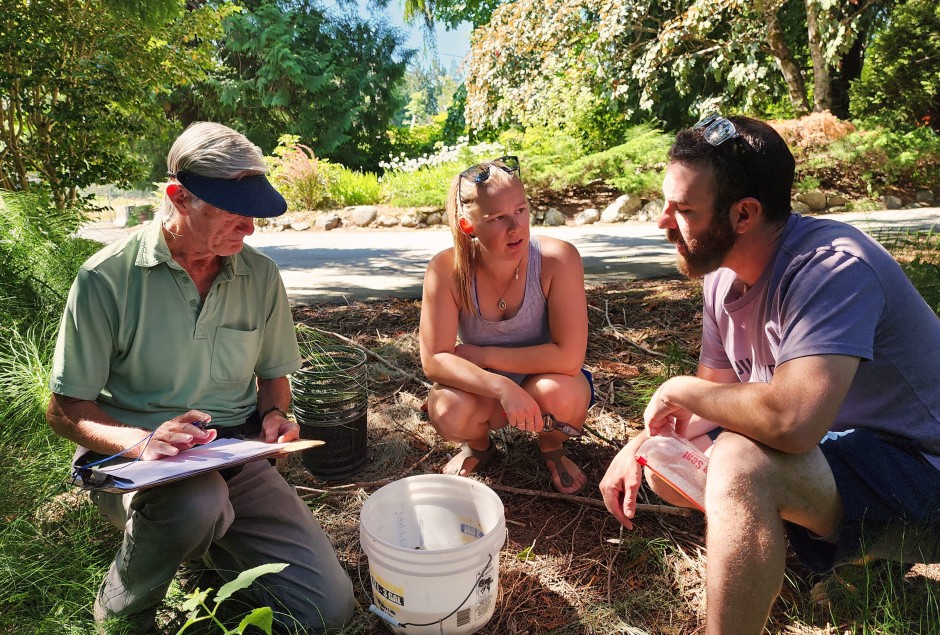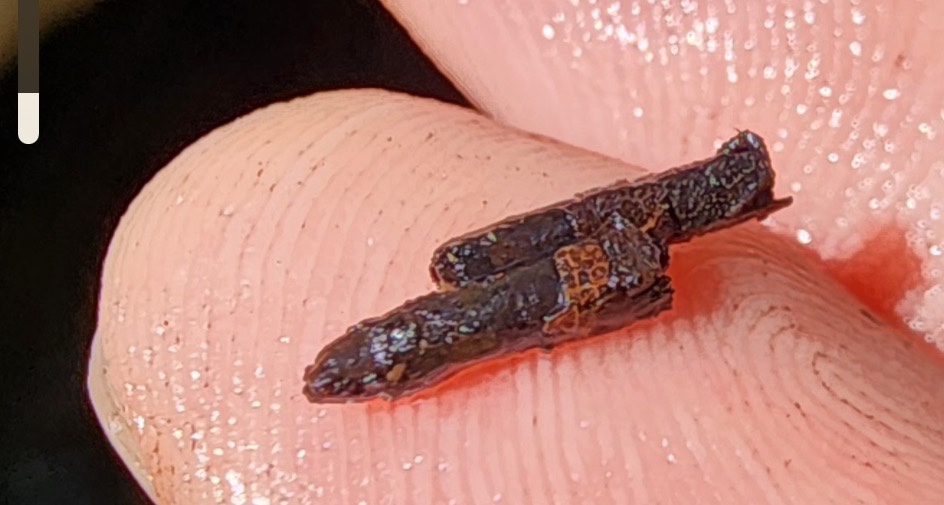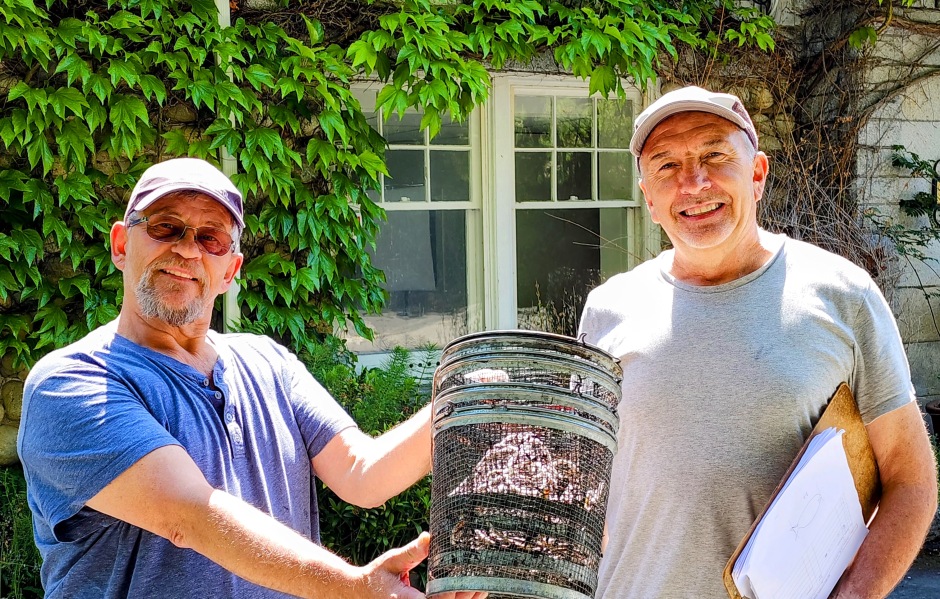A visit to Lyall Creek, Saturna Island
Lyall Creek, a four kilometer long sanctuary for salmon (Coho and Chum) and trout (Searun Cutthroat) on Saturna Island, bears some similarities to Bee Creek, and a visit was planned this month, thanks to the team at Gulf Island National Park Reserve.
Shown here at the mouth of Lyall Creek, Sibylla, Hanna and Iain, began the tour with a history of the creek and an explantion of how restauration work played an important role in reviving the creek habitat on the island.
We spent the day viewing fish monitoring reaches, (groups of traps sites), updating trail cameras for signs of animal life, such as beavers and otters, taking temerature readings and examining the health of the creek.



Of special interest was the apparent wash out of a small beaver lodge which spanned the creek. At first it was thought that the beaver had abandonned its home, but on further examination, evidence of the beaver from trail cams as was found. The dam is likely to be rebuilt, perhaps at a new site, potentially causing an obstruction for the spawning fish and one trail cam was repositioned to monitor any activity.




















